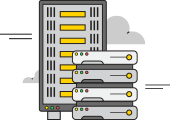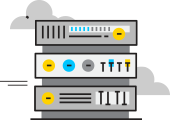Introduction
DNS (Domain Name System) attack is a type of cyber attack that targets the Domain Name System, which is a crucial component of the internet infrastructure. The primary purpose of DNS is to translate human-readable domain names (e.g., oneproxy.pro) into machine-readable IP addresses (e.g., 192.0.2.1). By compromising the DNS, attackers can redirect legitimate users to malicious websites, intercept communications, or conduct various other nefarious activities. This article provides a detailed examination of DNS attacks, their history, types, characteristics, and potential future developments.
History and First Mention
The first mention of DNS attacks can be traced back to the early 1990s when the internet was still in its infancy. However, DNS attacks have evolved significantly since then, with new attack vectors continuously emerging. The initial focus was on simple DNS cache poisoning attacks, which involved altering the DNS cache records to redirect users to malicious sites. Over time, attackers developed more sophisticated techniques, such as DNS tunneling, DNS amplification, and DDoS attacks targeting DNS infrastructure.
Detailed Information on DNS Attack
DNS attacks encompass a wide range of techniques and methods, making them a versatile tool for cybercriminals. Some common DNS attack methods include:
-
DNS Spoofing or Cache Poisoning: Involves injecting false DNS data into a caching DNS server, leading to the redirection of users to malicious websites.
-
DNS Amplification: Exploits open DNS resolvers to send a large volume of DNS responses to a targeted victim, causing a DDoS attack.
-
DNS Tunneling: Encapsulates non-DNS traffic within DNS queries and responses, allowing attackers to bypass security measures.
-
DDoS Attacks on DNS: Overwhelms DNS servers with a massive volume of requests, causing service disruption and making it difficult for legitimate users to access websites.
-
Fast Flux DNS: Utilizes a constantly changing set of IP addresses associated with a domain to evade detection and hosting illegal content.
Internal Structure and Working of DNS Attack
The internal structure of a DNS attack can vary based on the specific method employed. However, the general workflow typically involves the following steps:
-
Reconnaissance: Attackers gather information about the target’s DNS infrastructure and identify potential vulnerabilities.
-
Weaponization: The attacker crafts malicious DNS payloads or exploits to be used in the attack.
-
Delivery: The malicious DNS payload is delivered to the target’s DNS servers, often through cache poisoning or direct injection.
-
Exploitation: The target DNS servers are compromised, and users are redirected or denied access.
-
Evasion: Sophisticated attackers may attempt to evade detection by using encryption or other obfuscation techniques.
Key Features of DNS Attack
DNS attacks possess several key features that make them particularly attractive to cybercriminals:
-
Ubiquity: DNS is a fundamental part of the internet infrastructure, making it a common point of vulnerability.
-
Stealth: Many DNS attacks are designed to be stealthy and challenging to detect, allowing attackers to remain undetected for extended periods.
-
Amplification: DNS amplification attacks can generate significant traffic volume, amplifying the impact of the attack.
-
Global Reach: DNS attacks can have a global reach, affecting users worldwide.
-
Economic Impact: DNS attacks can result in financial losses for businesses and individuals, impacting online services and e-commerce.
Types of DNS Attack
| Type | Description |
|---|---|
| DNS Spoofing | Redirects users to malicious sites by injecting false DNS data into caching DNS servers. |
| DNS Amplification | Utilizes open DNS resolvers to flood a target with DNS responses, causing a DDoS attack. |
| DNS Tunneling | Encapsulates non-DNS traffic within DNS queries and responses, used to bypass security measures. |
| DNSSEC Attack | Exploits vulnerabilities in DNSSEC (DNS Security Extensions) to compromise the integrity of DNS data. |
| DNS Water Torture Attack | Delays DNS responses to cause a denial of service, exhausting server resources. |
| DNS Rebinding Attack | Allows an attacker to bypass the same-origin policy of web browsers to perform unauthorized actions on webpages. |
Utilization, Challenges, and Solutions
DNS attacks can serve various malicious purposes, such as:
-
Phishing: Redirecting users to fake websites to steal sensitive information, such as login credentials.
-
Man-in-the-Middle Attacks: Intercepting DNS queries to redirect traffic through an attacker-controlled server.
-
Distributed Denial of Service (DDoS): Overloading DNS servers to cause service disruptions.
-
Data Exfiltration: Using DNS tunneling to bypass network security and exfiltrate sensitive data.
To mitigate DNS attacks, various solutions and best practices can be implemented, including:
-
DNS Security Extensions (DNSSEC): Adds an extra layer of security by signing DNS data, preventing data manipulation.
-
DNS Filtering: Employing DNS filtering services to block access to known malicious domains.
-
Rate Limiting: Limiting the number of DNS requests from individual clients to prevent DNS amplification attacks.
-
Network Segmentation: Separating critical DNS servers from public-facing servers to reduce attack surface.
Comparison with Similar Terms
| Term | Description |
|---|---|
| DNS Attack | Targets the Domain Name System to redirect, intercept, or disrupt DNS services. |
| DDoS Attack | Floods a target with high volumes of traffic to overwhelm and disable its services. |
| Phishing Attack | Tricks users into revealing sensitive information by impersonating trusted entities. |
| MITM Attack | Eavesdrops on communication between two parties without their knowledge. |
| DNS Poisoning | Corrupts the DNS cache with false data, redirecting users to malicious websites. |
Perspectives and Future Technologies
As technology advances, so will the techniques used in DNS attacks. Future perspectives may include:
-
AI-based Threat Detection: Implementing AI algorithms to detect and mitigate DNS attacks in real-time.
-
Blockchain DNS: Using blockchain technology to create a decentralized and tamper-proof DNS system.
-
Zero Trust Architecture: Adopting a zero-trust approach to verify and secure all DNS transactions.
-
Secure DNS over HTTPS (DoH): Encrypting DNS queries to prevent eavesdropping and tampering.
Proxy Servers and DNS Attack
Proxy servers, like those offered by OneProxy, play a vital role in safeguarding against DNS attacks. They act as intermediaries between users and the internet, shielding users’ IP addresses and protecting their DNS requests. By routing traffic through proxy servers, users can avoid direct exposure to potential DNS threats and improve their online security and privacy.
Related Links
- DNS Security: Threats, Attacks, and Countermeasures (National Institute of Standards and Technology)
- DNS Amplification Attacks: How to Prevent (Cloudflare)
- A Survey of DNS Security: Best Practices and Future Research Directions (IEEE)
- DNS over HTTPS (DoH) Explained (Mozilla)
In conclusion, DNS attacks pose significant risks to the stability and security of the internet. By understanding the various attack methods and implementing appropriate security measures, businesses and individuals can fortify their DNS infrastructure and protect against potential threats. Proxy servers, such as those provided by OneProxy, offer an additional layer of protection, enhancing online privacy and security for users. As technology evolves, continued research and vigilance will be essential to stay one step ahead of DNS attackers and safeguard the internet’s integrity and accessibility.




